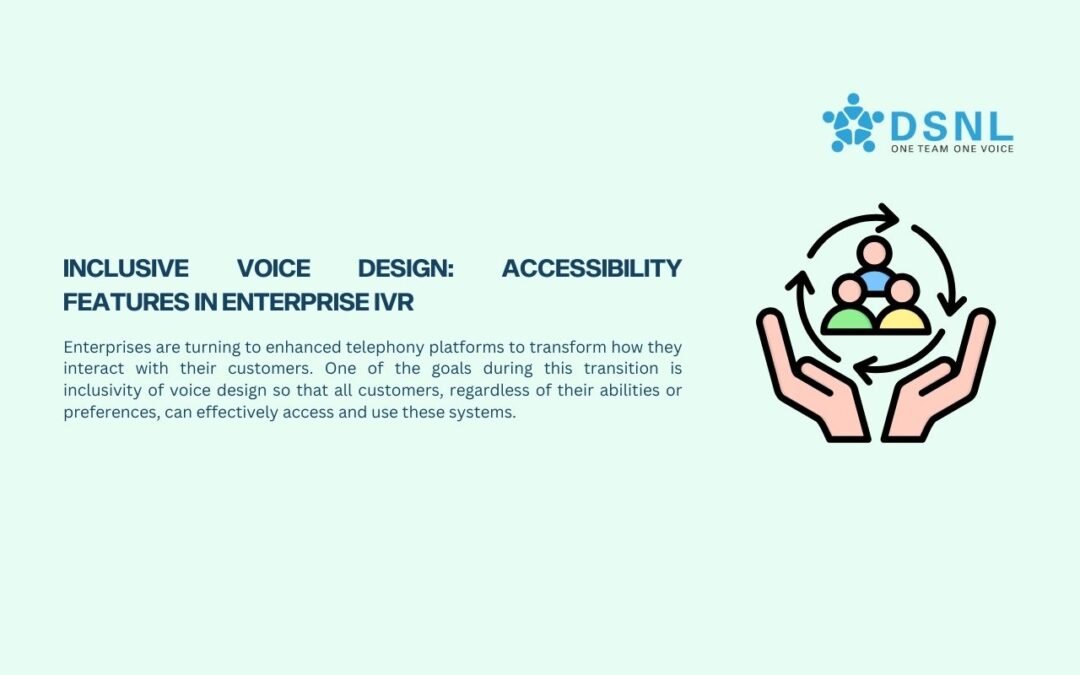Enterprises are turning to enhanced telephony platforms to transform how they interact with their customers. One of the goals during this transition is inclusivity of voice design so that all customers, regardless of their abilities or preferences, can effectively access and use these systems.
Interactive Voice Response (IVR) systems represent the front line of the IVR system-customer relationship. For this reason, IVRs and the associated interactions must be accessible to everyone as much as possible.
Accessibility in IVR Systems
A thoughtfully designed IVR call flow, with no or minimal loops or dead ends, is also very important. While accessibility considerations may be focused on some of our customers with disabilities, they are important to the entire customer base. Language, literacy, and culture can be factors.
Designing for Accessibility Considerations
There can also be a balancing act with trying to improve accessibility and efficiency. Making an IVR call flow more accessible to one group of customers can often mean adding more steps that increase the call duration and reduce efficiency for other customers.
Inclusive voice design in enterprise IVR systems is a commitment to customer engagement that values and supports the entire diversity of all our customers. By making our IVRs more accessible, we are also ensuring that everyone can access and use them, no matter what their abilities or needs are.
Accessibility in IVR systems is a legal and ethical requirement, as well as an opportunity to stand out from the crowd and create a positive brand experience for all our customers.
Optimize Call Flows for Accessibility
IVR systems with complex call flows, lengthy menus, and multiple interactions to complete a simple task will frustrate many of our customers. Customers who have cognitive disabilities or short attention spans are even more easily frustrated by complex and long menus. Therefore, it is further essential that Enterprise IVR must remain accessible to all. This provides seamless experience over different devices. It also functions smoothly over varying network conditions.
The Value of Accessibility in IVR
Incorporating accessibility considerations in IVR systems provides value for our enterprises. Accessibility increases our addressable market, as it allows for more customers to access and use our IVR systems effectively. It also minimizes accessibility risks and regulatory compliance challenges and enables positive differentiation.
Addressing accessibility earlier in the process rather than in a later phase will make it easier to resolve such issues. Iterative design and feedback with regular testing with disabled customers is one way to improve inclusive design in our IVR systems.
Conclusion
Creating accessibility within IVRs also has its own considerations to keep in mind. Enterprises will need to invest in the speech technology backend to support a multilingual speech recognition and text-to-speech platform. There will need to be an investment made in developing and maintaining the APIs to support integration into the numerous assistive technologies that will need to be supported. Call our executives to know more about the inclusive voice design accessibility feature in enterprise IVR.

